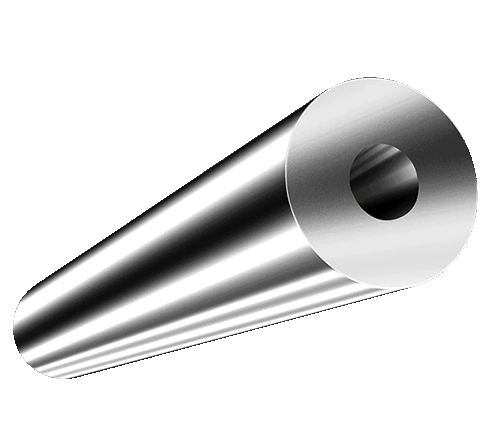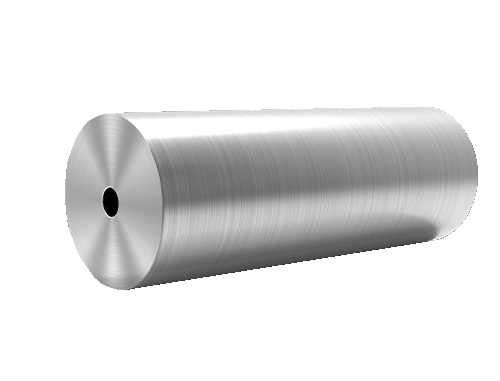Shandong Qilu lndustrial Co.,Ltd.
How Hollow Structural Tubes Revolutionize Structural Engineering
Introduction

In the world of structural engineering, innovation continually shapes how we design and construct buildings and infrastructure. One of the most transformative advancements in recent years is the use of hollow structural tubes. These versatile components offer a range of benefits over traditional solid sections, revolutionizing the way engineers approach design, efficiency, and aesthetics. This article explores the impact of hollow structural tubes on structural engineering, delving into their advantages, applications, and future potential.
What are Hollow Structural Tubes?
Hollow structural tubes are steel or aluminum tubes with a hollow cross-section, commonly used in construction and structural applications. They come in various shapes, including circular, square, and rectangular, and are designed to provide structural support while minimizing weight.
Key Characteristics of Hollow Structural Tubes:
- Shape: Available in circular, square, and rectangular cross-sections.
- Material: Typically made from steel or aluminum.
- Wall Thickness: Varies to suit different load-bearing requirements.
Advantages of Hollow Structural Tubes
The use of hollow structural tubes offers several significant advantages in structural engineering, making them a popular choice for modern construction projects.
Enhanced Strength-to-Weight Ratio
One of the primary benefits of hollow structural pipes is their excellent strength-to-weight ratio. The hollow design allows for substantial load-bearing capacity while reducing overall weight, which can lead to:
- Reduced Material Costs: Less material is required to achieve the same structural support.
- Lower Transportation Costs: Lighter components are easier and cheaper to transport.
Aesthetic Flexibility
Hollow structural pipes offer greater design flexibility compared to traditional solid beams and columns. Their sleek appearance allows for more aesthetically pleasing structures. Key points include:
- Sleek Lines: Create modern, clean lines in architectural design.
- Integration with Glass and Facades: Facilitate innovative integration with glass and other materials.
Improved Load Distribution
The design of hollow structural pipes allows for more effective load distribution, which enhances structural stability and performance. This can lead to:
- Increased Load-Bearing Capacity: Efficiently handles larger loads with less material.
- Better Stress Distribution: Reduces localized stress concentrations.
Applications of Hollow Structural Tubes
Hollow structural tubes are used in a wide range of applications, demonstrating their versatility and effectiveness in various structural contexts.
High-Rise Buildings
In high-rise construction, hollow structural pipes are often used for columns and frames. Their strength-to-weight ratio and load distribution properties are particularly advantageous for supporting tall structures.
Bridges and Infrastructure
Hollow structural tubes are employed in the construction of bridges and other infrastructure projects. Their lightweight nature and high strength make them ideal for components such as trusses and supports.
Architectural Features
Modern architecture often utilizes hollow structural pipes for aesthetic and functional purposes. Examples include:
- Exposed Structural Elements: Used as visible elements in the design.
- Customizable Designs: Allows for unique shapes and designs.
Table: Comparison of Hollow Structural Tubes and Solid Sections
| Feature | Hollow Structural Tube | Solid Section |
|---|---|---|
| Strength-to-Weight Ratio | High | Moderate |
| Material Cost | Lower | Higher |
| Aesthetic Flexibility | High | Limited |
| Load Distribution | Efficient | Less Efficient |
| Construction Complexity | Moderate | Simple |
Engineering Considerations
When incorporating hollow structural pipes into a design, several engineering considerations must be taken into account to ensure optimal performance.
Structural Analysis
Proper structural analysis is essential to determine the appropriate dimensions and material specifications for hollow structural tubes. This includes:
- Load Calculations: Assessing the loads the tubes will support.
- Stress Analysis: Evaluating how stresses will be distributed.
Fabrication and Assembly
The fabrication and assembly of hollow structural pipes require careful planning to ensure accuracy and structural integrity. Considerations include:
- Precision Cutting: Ensuring accurate cuts for proper fit.
- Welding and Connections: Using appropriate techniques for joining tubes.
Environmental Considerations
The environmental impact of using hollow structural tubes should be considered, including:
- Material Sourcing: Assessing the sustainability of the materials used.
- Lifecycle Assessment: Evaluating the overall environmental impact of the tubes.
Future Trends and Innovations

The use of hollow structural pipes is expected to evolve with advancements in materials and construction techniques. Future trends include:
Advanced Materials
Development of new materials, such as high-strength composites and alloys, could enhance the performance and applications of hollow structural pipes.
Sustainable Practices
Incorporating sustainability into the design and manufacturing of hollow structural tubes will become increasingly important, with a focus on reducing environmental impact.
Smart Structures
Integration of smart technologies, such as sensors and monitoring systems, could provide real-time data on the performance and condition of hollow structural pipes.
Conclusion
Hollow structural tubes have revolutionized structural engineering by offering enhanced strength-to-weight ratios, aesthetic flexibility, and improved load distribution. Their applications span high-rise buildings, bridges, and architectural features, showcasing their versatility and effectiveness. As technology advances, the use of hollow structural tubes will continue to evolve, incorporating new materials, sustainable practices, and smart technologies. Embracing these innovations will enable engineers to push the boundaries of design and construction, creating structures that are both functional and visually striking.
FAQ
Q: What materials are commonly used for hollow structural tubes?
A: Hollow structural tubes are typically made from steel or aluminum, with each material offering different properties suited to various applications.
Q: How does the strength-to-weight ratio of hollow structural pipes compare to solid sections?
A: Hollow structural pipes generally offer a higher strength-to-weight ratio compared to solid sections, making them more efficient for load-bearing applications.
Q: Can hollow structural tubes be used in both residential and commercial construction?
A: Yes, hollow structural tubes can be used in both residential and commercial construction, including high-rise buildings, bridges, and architectural features.
Q: What are the key factors to consider when designing with hollow structural pipes?
A: Key factors include structural analysis, fabrication and assembly processes, and environmental considerations.
Q: What are the future trends in the use of hollow structural tubes?
A: Future trends include advancements in materials, sustainable practices, and integration of smart technologies.
